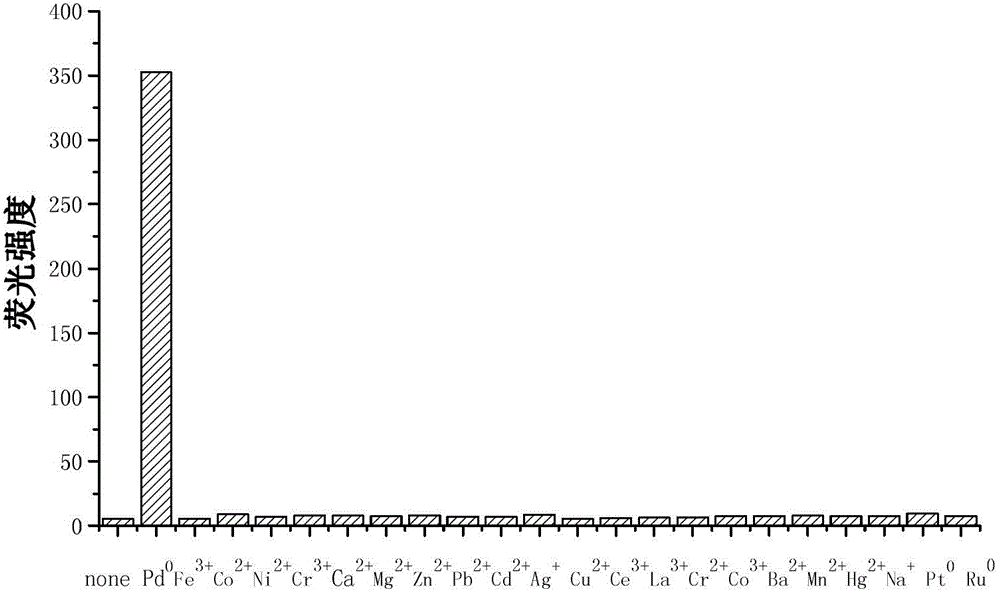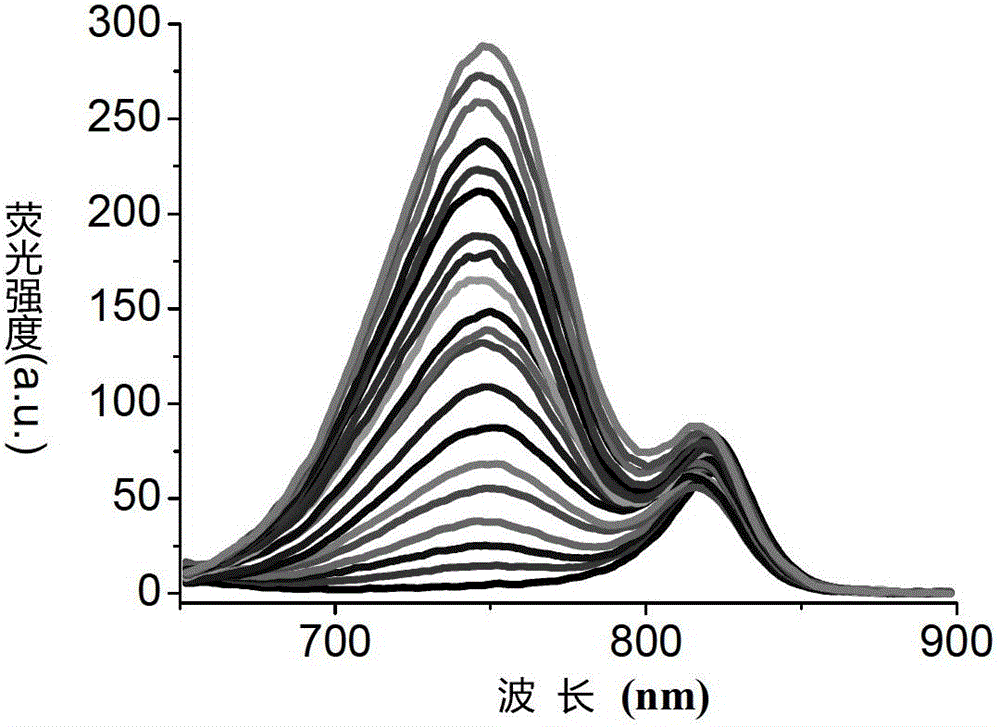Near-infrared fluorescent probe compound as well as preparation method and application thereof
A technology of fluorescent probes and compounds, which is applied in the field of single-charged nitrogen-containing cyanine fluorescent dyes and their preparation, can solve the problems that the spectrum is not in the near-infrared region and the equilibration time is long, and achieve wide application prospects, low biological toxicity, and good sensitivity Effect
- Summary
- Abstract
- Description
- Claims
- Application Information
AI Technical Summary
Problems solved by technology
Method used
Image
Examples
Embodiment 1
[0038] Example 1 The synthetic route of the parent Cy7 dye VIa containing chlorine bridged ring
[0039]
[0040] (1) Synthesis of intermediate 2,3,3-trimethyl-3H-indoline
[0041] In a 1000mL three-neck flask, add 150mL of glacial acetic acid, 84mL (0.8mol) of 3-methyl-2-butanone and 0.26mol of p-hydrazinobenzene in sequence. The mixture was heated to reflux for 3 h, the reactant was poured into a beaker, and after standing for cooling, a pink solid precipitated out. Filter and dry in vacuo to obtain 2,3,3-trimethyl-3H-indoline with a yield of 75%.
[0042] (2) Synthesis of intermediate N-ethyl-2,3,3-trimethyl-3H-indoline
[0043] In a 100mL round bottom flask, add 15.9g (0.1mol) 2,3,3-trimethyl-3H-indoline, 23.4g (0.15mol) ethyl iodide, and 65mL toluene in sequence, and heat to reflux under nitrogen protection After reacting for 5 hours, a pink solid was obtained. Ultrasound made the solid on the wall enter the liquid, filtered, washed several times with ether, and dri...
Embodiment 2
[0048] Synthesis and characterization of embodiment 2 dye VIIa
[0049]
[0050] Dye VIa was pre-dried in vacuum at 50-60°C for 8h, nucleophile C 2 h 5 NH 2 Refined by vacuum distillation in advance. The glassware used was pre-dried at 120°C for 3 hours, and the three-necked round-bottom flask used was cooled under a nitrogen atmosphere, and 0.12 mmol of dye VIa and 1.2 mmol of nucleophile C were added. 2 h 5 NH 2 . Add about 15 mL of anhydrous DMF as solvent and 3 mmol of acid-binding agent DIEA with a syringe under nitrogen atmosphere. The reaction mixture was kept at 40-55° C. and stirred for 2 h under the protection of nitrogen. The reaction solution was poured into rapidly stirred 300mL ether, and a large amount of blue solid precipitated. Filter the filtrate with a sand core funnel, and dissolve the solid from the funnel with methanol, evaporate the methanol to dryness, and obtain the crude dye VIIa, which is then purified by column chromatography. 1HNMR (400...
Embodiment 3
[0051] Synthesis and characterization of embodiment 3 dye VIIIa
[0052]
[0053]Dye VIIa was vacuum-dried at 50-60°C for 8 h in advance, and the nucleophile allyl chloroformate was purified by distillation under reduced pressure. The glassware used was pre-dried at 120° C. for 3 h, and the three-necked round-bottom flask used was cooled under nitrogen atmosphere, and then 0.1 mmol of dye VIIa and 1 mmol of nucleophile allyl chloroformate were added. Under a nitrogen atmosphere, add about 10 mL of anhydrous dichloromethane as a solvent and 2.5 mmol of an acid-binding agent DIEA with a syringe. The reaction mixture was stirred at room temperature for 2 h under nitrogen protection. The reaction solution was poured into rapidly stirred ether, and a large amount of green solid precipitated. Filter the filtrate with a sand core funnel, and dissolve the solid from the funnel with methanol, evaporate the methanol to dryness, and obtain the crude dye VIIIa, which is then purified...
PUM
 Login to View More
Login to View More Abstract
Description
Claims
Application Information
 Login to View More
Login to View More - R&D
- Intellectual Property
- Life Sciences
- Materials
- Tech Scout
- Unparalleled Data Quality
- Higher Quality Content
- 60% Fewer Hallucinations
Browse by: Latest US Patents, China's latest patents, Technical Efficacy Thesaurus, Application Domain, Technology Topic, Popular Technical Reports.
© 2025 PatSnap. All rights reserved.Legal|Privacy policy|Modern Slavery Act Transparency Statement|Sitemap|About US| Contact US: help@patsnap.com



